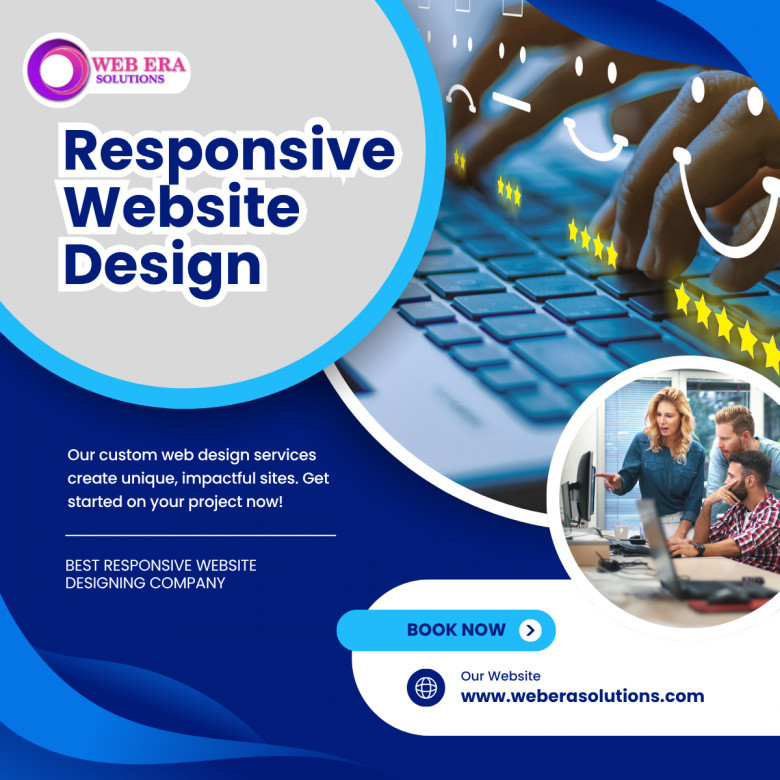views
Best Practices for E-Commerce UX Design

In today’s competitive digital marketplace, a beautiful e-commerce website is no longer enough — it must be user-friendly, fast, intuitive, and conversion-focused. The difference between a user browsing and actually buying often comes down to one key factor: User Experience (UX) design.
At Web Era Solutions, we believe every e-commerce website should not only attract traffic but convert that traffic into sales. In this blog, we’ll walk you through the best practices for e-commerce UX design to help your online store drive engagement, build trust, and boost revenue.
Why UX Matters in E-Commerce
E-commerce success isn’t just about having great products. It’s about how easily users can:
-
Find what they’re looking for
-
Understand your offerings
-
Navigate the buying journey
-
Trust your brand
-
Complete a smooth, secure checkout
Poor UX = abandoned carts, high bounce rates, and lost sales.
Great UX = higher engagement, improved trust, and increased conversions.
Let’s dive into the best practices that every e-commerce site must follow in 2025 and beyond.
1. Simplify Site Navigation
E-commerce websites frequently offer a large selection of products and categories. Users can locate what they need without frustration when navigation is simple and easy to understand.
Best Practices:
-
Make use of a simple top navigation menu with distinct sections.
-
Include a mega menu for complex product catalogs
-
Add filters and sorting options on product listing pages
-
Offer a prominent search bar with auto-suggestions
Pro Tip: Add breadcrumbs so users can backtrack easily without starting over.
2. Optimize for Mobile First
Over 70% of e-commerce traffic now comes from smartphones. A mobile-unfriendly site is a guaranteed way to lose customers.
Mobile UX Essentials:
-
Responsive design across all screen sizes
-
Touch-friendly buttons and elements
-
Fast loading pages (especially on mobile data)
-
Simple, scroll-based navigation
At Web Era Solutions, we build every e-commerce store with a mobile-first mindset to ensure seamless shopping on the go.
3. Improve Product Page Design
Customers either choose to buy from or leave your product page. It must be convincing, educational, and unambiguous.
Must-Have Elements:
-
High-quality images with zoom and multiple views
-
Clear product titles and descriptions
-
Pricing, discounts, and availability
-
Customer reviews and ratings
-
Prominent “Add to Cart” and “Buy Now” buttons
Extra Tip: Use urgency elements like limited-time offers or low stock notices to drive faster decisions.
4. Make the Checkout Process Seamless
A complicated or lengthy checkout process is one of the top reasons for cart abandonment. The easier it is to pay, the more likely customers are to complete the purchase.
Checkout UX Best Practices:
-
Offer guest checkout (no forced account creation)
-
Minimize steps (ideally, one-page checkout)
-
Show progress indicators during multi-step checkouts
-
Use auto-fill and address suggestions
-
Provide multiple secure payment options
Don’t forget: Clearly display shipping costs and estimated delivery dates upfront.
5. Ensure Speed and Performance
Slow-loading pages are a conversion killer. Conversions can be reduced by 7% with even a one-second lag.
How to Improve:
-
Compress and optimize product images
-
Use caching and content delivery networks (CDNs)
-
Eliminate unnecessary scripts and plugins
-
Choose a high-performance hosting solution
Speed = trust + better SEO + lower bounce rates.
6. Use Trust Signals Throughout the Journey
E-commerce shoppers need to feel safe before they enter their card details. Design plays a key role in building that trust.
Essential Trust Elements:
-
SSL certificate (HTTPS)
-
Payment security badges (Visa, Mastercard, PayPal, etc.)
-
Clear return and refund policies
-
Real customer reviews and testimonials
-
Visible contact info and “About Us” section
Trust builds confidence, and confidence drives conversions.
7. Provide Smart Product Recommendations
Using personalized recommendations based on browsing behavior or related products can significantly increase average order value.
Best UX Practices:
-
“You might also like” or “Frequently bought together” sections
-
Personalized homepages for returning users
-
Recently viewed item suggestions
When done right, this not only helps the user but improves sales organically.
8. Use Clear and Engaging CTAs
Your calls-to-action (CTAs) should stand out and guide users to the next step — whether it’s viewing a product, adding to the cart, or checking out.
CTA Tips:
-
Use contrasting colors for buttons
-
Keep the text action-focused (“Buy Now,” “Get It Today,” “Add to Bag”)
-
Repeat CTAs throughout product and category pages
-
Avoid too many options — guide users to one main action
9. Include Live Chat or Support Options
Sometimes, users have questions before they buy. Giving them instant support can be the difference between a bounce and a purchase.
Support UX Features:
-
Live chat with real-time response
-
Chatbots for FAQs and basic inquiries
-
Contact forms with fast turnaround
At Web Era Solutions, we integrate smart live chat systems that support users 24/7 and boost conversions.
Final Thoughts
E-commerce UX design is not just about making things look good — it’s about creating a shopping experience that’s effortless, trustworthy, and enjoyable. When done right, it leads to higher sales, happier customers, and long-term business growth.






















Comments
0 comment